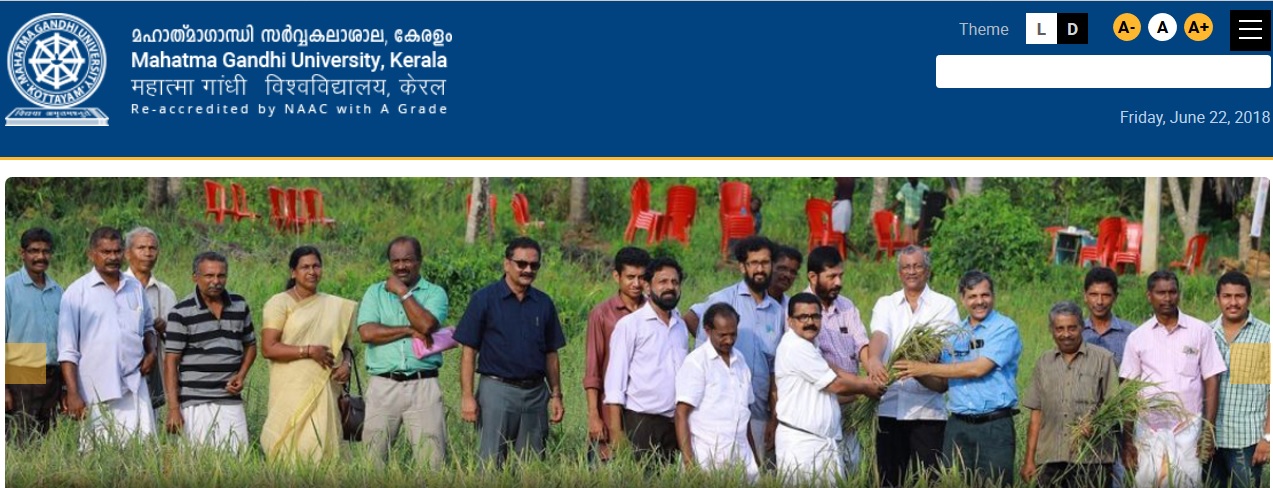PH3C11 Drug Design & Pharmacology M.Sc Model Question Paper : mgu.ac.in
Name of the University : Mahatma Gandhi University
Department : Chemistry
Degree : M.Sc. Pharmaceutical Chemistry
Subject Code/Name : PH3C11/Drug Design & Pharmacology
Sem : III
Website : mgu.ac.in
Document Type : Model Question Paper
Download Model/Sample Question Paper : https://www.pdfquestion.in/uploads/mgu.ac.in/5120-III%20PH.pdf
MGU Pharmacology Question Paper
Model Question Paper :
Time : 3 Hrs
Max. Weight: 30
Related : MGU PH3C10/PO3C10 Physical Chemistry M.Sc Model Question Paper : www.pdfquestion.in/5119.html
Section A
(Answer any 10 questions. Each question carries a weight of 1)
01. Stereoisomerism and biological activity are related. Illustrate by taking ephedrine as an example.
02. State Ferguson’s principle.
03. What are analeptics? Write down the synthesis of nikethamide.
04. What do you mean by bioisosterism?
05. Give two examples for centrally acting muscle relaxants with structure.
06. Explain the role of cytochrome P450 in drug biotransformation.
07. What are monooxygenases? What are their significances?
08. What is a sympathomimetic agent ? Give two examples.

09. Name a synthetic narcotic analgesic and give its structure.
10. Differentiate between drug dependence and drug tolerance.
11. Give the retrosynthetic analysis of ketoprofen and name the synthons.
12. What is the principle involved in the assay of yellow mercuric oxide?
13. Give any two non-barbiturate hypnotics with structures.
(10 x 1 =10 weights)
Section B
(Answer any 5 questions. Each question carries a weight of 2)
14. What is Hansch Analysis? How is it useful in the design of drugs?
15. Give the method of preparation, uses and limit tests for the following:
a) aluminium hydroxide gel b) calcium lactate
16. What are the types of epilepsy? Give the synthesis of a hydantoin derivative.
17. Outline the role of benzodiazepines as antianxiety agents.
18. Discuss dose response relationship graphically.
19. Discuss SAR of barbituric acid derivatives for hypnotic and sedative action.
20. Discuss the structurally specific and non-specific activity of drugs with examples.
21. Write a note on metal toxicity. (5×2=10 weights)
Section C
(Answer any 2 questions. Each question carries a weight of 5)
22. Discuss the following compounds with synthesis of any one from each:
a) Arylacetic acid derivatives used as analgesics.
b) Intravenous anaesthetics.
c) Salicylic acid derivatives used as antipyretics.
23. a) Discuss various factors affecting drug design.
b) Explain the phase I metabolic reactions with suitable examples.
c) Explain any two types of molecular graphics in drug modeling.
24. Illustrate the synthesis and therapeutic uses of the following drugs:
a) Diazepam b) Levodopa c) besiperidine
25. a) What is Parkinsonism? What are the disorders associated?
b) Discuss various agents used for the management of Parkinsonism.
c) Cholinergic agonists for the management of Alzheimer’s disease. (2 x 5 =10 weights)
Open Course CH5D01.1 : Dairy Science
Model Question Paper :
Time : Three hours
Total weightage : 25
Section A : (Answer all questions. Each bunch of four questions carries a weightage of 1)
1. The true constituent of milk is
(a)Casein (b) Lactose (c) Fat (d) All the above
2. The bacteria that can grow at refrigeration temperature is known as
(a) psychrotopic b) mesophilic (c) thermophilic (d) none of these
3. Flavored milk and flavored drink differ in their
(a) Fat content (b) milk content (c) Flavors used (d) Sugar content
4. What is the reason for low PH value of milk
(a) Bacterial infection (b)Viral infection (c) udder infection (d) All the above
II 5. The predominant form of bacteria in milk is
(a) Spherical (b) cylindrical (c) spiral (d) both spherical and cylindrical
6. Reconstituted milk is made by
(a) mixing butter with milk (b) mixing whole milk powder in water
(c) mixing skim milk powder in water (d) mixing skim milk powder with fresh milk
7. There is no formation of cream layer in
(a) Reconstituted milk (b) toned milk (c) Double toned milk (d) Homogenized milk
8. The purpose of standardizing milk is
(a) to make it more digestible (b) to make butter
(c) to ensure milk of uniform composition (d) to make milk cheaper
II1 9. In HTST pasteurization, milk is heated to ………..0C
10. Chhanna is also called…………….
11. The average specific gravity of cow milk is……….
12. Fresh drawn milk is ………… to litmus
IV 13. What is the full form of PFA ?
14. Give an example for a stabilizer of ice cream
15. Give an example for an artificial sweetener
16. Give an example of a fermented milk product [4 x 1 = 4]